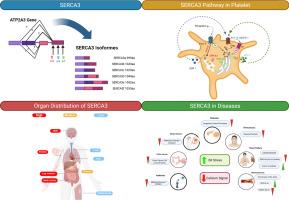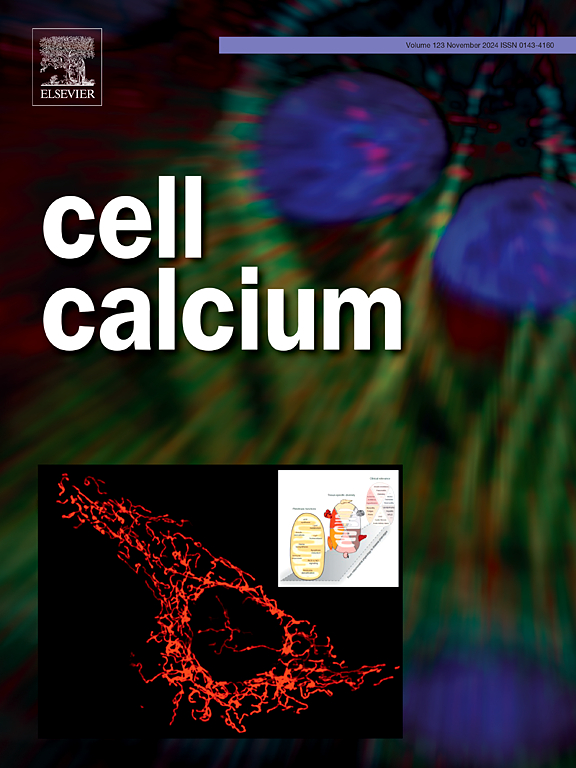SERCA3, ubiquitous but specific calcium pumps?
IF 4
2区 生物学
Q2 CELL BIOLOGY
引用次数: 0
Abstract
The calcium ion (Ca2+) is an important second messenger for the organism, participating in the regulation of various physiological responses in all cell types. In view of its crucial role, maintaining calcium homeostasis is important. This is why many players tightly regulate calcium homeostasis. These include a type of transporter historically located in the sarcoplasmic or endoplasmic reticulum (SR or ER), called Sarco-Endoplasmic Reticulum Ca2+-ATPase or SERCA calcium pumps (Toyoshima et al., 2000). Existence of these pumps was first demonstrated in the 1960s in rabbit skeletal muscle (Ebashi and Lipmann, 1962). In the mid-80s, only two families of these transporters, SERCA1 and SERCA2, were described in the skeletal muscle and the cardiovascular system, respectively. However, the existence of a third family, named SERCA3, was subsequently revealed. In this review, we present an overview of the current knowledge of the SERCA3. We firstly present the structure of this pump from its gene to the protein and its catalytic properties, highlighting its specific features compared to other isoforms. We then focus on the pathophysiological settings by describing its functional role established in several organs and pointing out the studies assuming its implication in different diseases such as obesity or cancers.

SERCA3,普遍存在但特定的钙泵?
钙离子(Ca2+)是机体重要的第二信使,参与调节各种细胞类型的各种生理反应。鉴于其至关重要的作用,维持钙稳态是很重要的。这就是为什么许多球员严格调节钙稳态的原因。其中包括一种历史上位于肌浆或内质网(SR或ER)的转运体,称为肌内质网Ca2+- atp酶或SERCA钙泵(Toyoshima等,2000)。这些泵的存在于20世纪60年代首次在兔骨骼肌中得到证实(Ebashi和Lipmann, 1962)。在80年代中期,只有两个转运蛋白家族,SERCA1和SERCA2,分别在骨骼肌和心血管系统中被描述。然而,随后发现了第三个家族,名为SERCA3。在这篇综述中,我们对SERCA3的现有知识进行了概述。我们首先介绍了该泵的结构,从其基因到蛋白质及其催化性能,突出了其与其他同工异构体相比的特定特征。然后,我们通过描述其在几个器官中建立的功能作用,并指出其在不同疾病(如肥胖或癌症)中的含义的研究,重点关注病理生理设置。
本文章由计算机程序翻译,如有差异,请以英文原文为准。
求助全文
约1分钟内获得全文
求助全文
来源期刊

Cell calcium
生物-细胞生物学
CiteScore
8.70
自引率
5.00%
发文量
115
审稿时长
35 days
期刊介绍:
Cell Calcium covers the field of calcium metabolism and signalling in living systems, from aspects including inorganic chemistry, physiology, molecular biology and pathology. Topic themes include:
Roles of calcium in regulating cellular events such as apoptosis, necrosis and organelle remodelling
Influence of calcium regulation in affecting health and disease outcomes
 求助内容:
求助内容: 应助结果提醒方式:
应助结果提醒方式:


